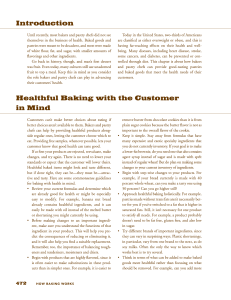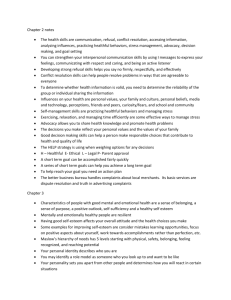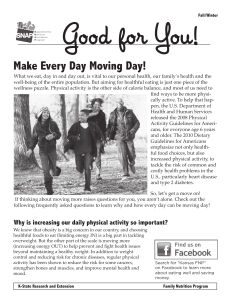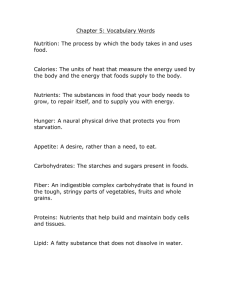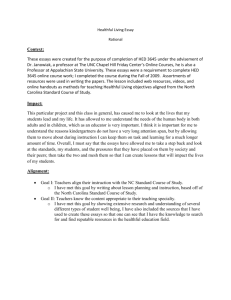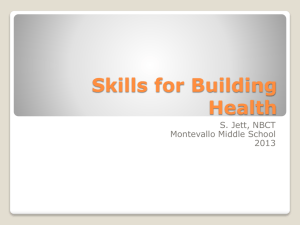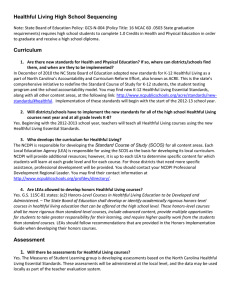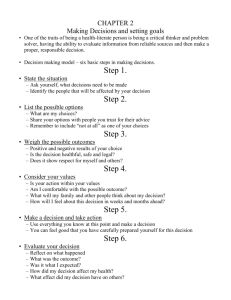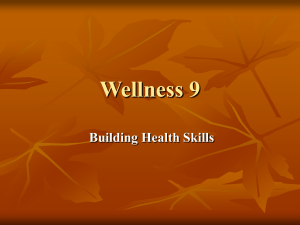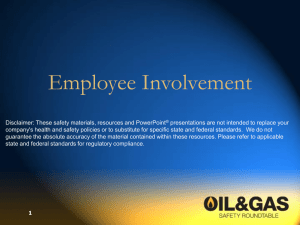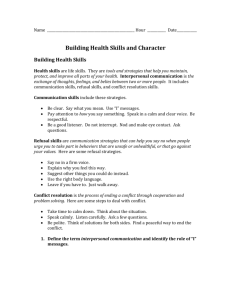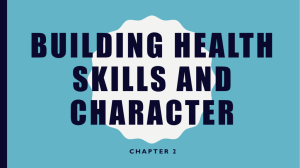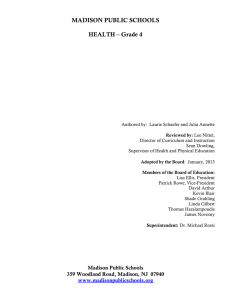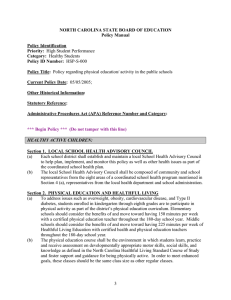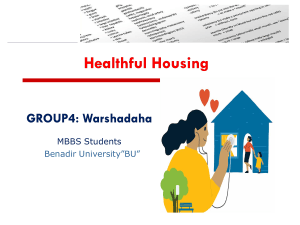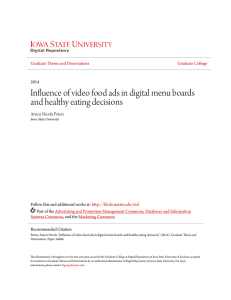INTRO to HEALTH powerpoin
advertisement
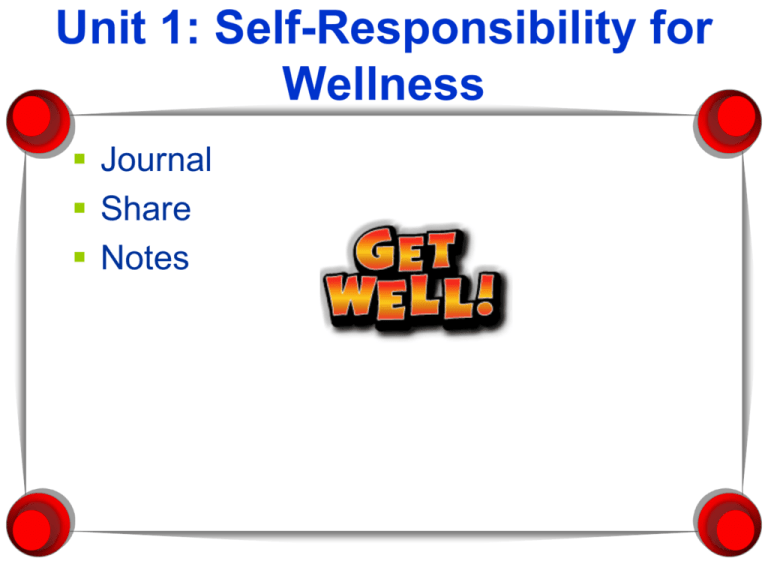
Unit 1: Self-Responsibility for Wellness Journal Share Notes Journal Talk about a time when you were feeling really sick. What was it like physically? How did you feel emotionally? Were you able to hang out with your friends and/or have energy to talk to them on the phone? Share Journals What is Health? HEALTH is a quality of life that includes your physical, mental, and social well-being. Physical is the condition of your body. Mental is the condition of your mind and emotions. Social is the way you relate to others. Quick Write • Write a paragraph evaluating your overall health, taking in your physical, mental, and social health. Healthful vs. Risk Behaviors A HEALTHFUL behavior is an action that helps prevent illness and accidents, helps promote health for you and others, or improves the quality of the environment. Examples: wearing a seatbelt, exercising regularly, eating healthful foods, getting enough sleep and relaxation. Healthy Unhealthy Healthful vs. Risk Behaviors A RISK behavior is an action that helps increase the likelihood of illness and accidents, threatens your health and the health of others, or helps destroy the environment. Examples: smoking cigarettes, snowboarding without helmet, using illegal drugs, and throwing plastic bottles in the regular trashcan. A Balanced Lifestyle The combination of the PMS of health contribute to a balanced lifestyle. The following health and risk items affect each other: safety and first aid, community and environment, mental health, family and social health, growth and development, nutrition, exercise and fitness, drugs, disease and disorders, consumer and personal health. Goals The first step to accomplishing things is to set a goal. • A GOAL is a desired achievement toward which you work. • What are some of your goals? Making a Plan After setting a goal, your next step is to make a plan. A PLAN is a detailed description of the steps you will take to reach your goal. Saying “get better grades” is a goal, but “try harder” is not a real plan… A Real Plan A real plan for attaining higher grades might look like this: • I will put time aside from 7-9 each night to do my homework. • I will not have any ims/ web sites open on my computer that are not directly connected to my homework. • I will make flashcards for studying for all tests. Making Responsible Decisions About Health You make many decisions every day about a variety of subjects. Think about some of the decisions you have already made today (what to eat, to wear your seatbelt, be nice/rude to a teacher, etc.) Making Responsible Decisions About Health The problem solving approach is a series of steps you apply to a situation to help you make a responsible decision. Consider each of the following steps in the problem-solving approach: Making Responsible Decisions About Health 1. Identify the problem 2. Identify ways to deal with the problem 3. Apply criteria for responsible decision making to each alternative • Would the results of my decisions Be healthful? Be safe? Be legal? Show respect for myself and others? Follow my parents or guardians guidelines? 4. Make a responsible decision and act upon it. 5. Evaluate your actions. Example 1. I didn’t study for a test 2. Cheat. Tell teacher I didn’t study. Cram. Skip class. Do my best and take the consequences. 3. Maybe legal and physically safe, but I would not be showing respect for myself, others, or my parents unless I chose “cram” and “do my best” or “tell teacher”. 4. I would decide to both cram and do my best. 5. I can look at myself in the mirror and know I have self respect. I will do better next time.
